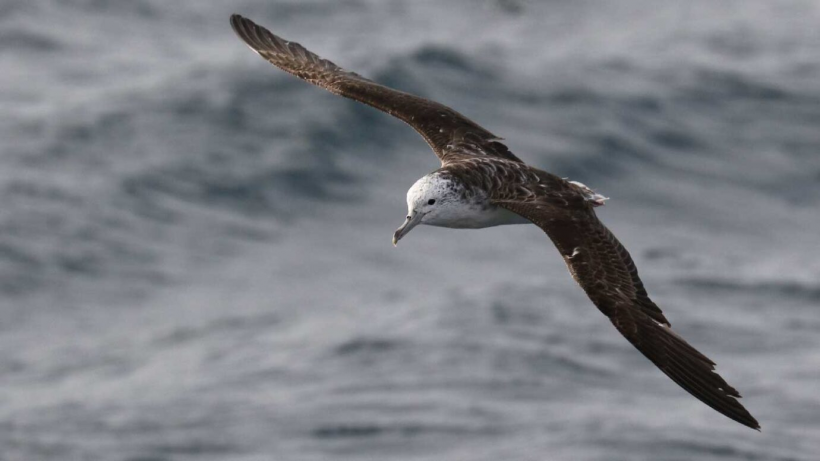Storms do not pose the only threat to certain seabirds since some seabirds literally board them. Studies published in the Proceedings of the National Academy of Sciences on Oct. 11 said that streaked shearwaters breeding on Japanese islands occasionally sail directly forward incoming typhoons, whereupon they soar near the eye of the storm for several hours at a time. This unusual habit, which has not been observed in any other bird species, may aid streaking shearwaters (Calonectris leucomelas) in surviving tornadic activity.
Birds and other creatures that live in thunderstorm and typhoon-prone regions have developed techniques to survive these fatal catastrophes. Prior research published in Nature Journal, which adopted GPS trackers in recent years, has demonstrated that even some ocean-dwelling birds, including the frigatebird (Fregata minor), would take large deviations to escape thunderstorms.
Streaked Shearwaters Flying Adaptabilities
This seems to be reasonable for seabirds that spent the majority of their existence at sea, as "there is absolutely nowhere else to escape," according to Emily Shepard, a based behavioral ecologist at Swansea University in Wales. She, along with her researchers, analyzed 11 years of monitoring data using GPS locators mounted to the wingspan of 75 birds breeding on Awashima Island in Japan to assess whether shearwaters dodge thunderstorms as well.
After merging such information alongside data on sustained winds during severe storms, the scientists found that shearwaters trapped within the open sea when a storm swept in would ride wind conditions from around the storm's perimeter.
Throughout up to eight hours, 13 of the 75 observed shearwaters soared within about 60 kilometers of the eye - a location Shepherd describes as the "eye socket" in which the wind speeds were fiercest - monitoring the storm as it moved northward. "We really cannot comprehend what we had been witnessing," Shepard writes. "We had some ideas regarding how they might act, although this was not one of those."
Under bigger storms, shearwaters were much more inclined to fly for the eye, soaring on gusts of up to 75 kilometers per hour. This suggests that the birds are tracking the eye to minimize being driven onshore, wherein they endanger collapsing or being struck by flying particles, Shepard added.

Streaked shearwaters spend most of their time at sea, where they occasionally fly through typhoons.
ALSO READ: Presence of Oil on Water Surface Could Be Detrimental to Seabirds' Feathers [Study]
Flight Path of Flying Shearwaters
Although it is the first time this tendency has been seen in any bird species, Andrew Farnsworth, an ornithologist at Cornell University who was not associated with the study, stated that flying with the winds could be a widespread approach for conserving energy throughout hurricanes. "It may appear to be illogical," he continues. "Therefore, it makes a great deal of sense from the standpoint of avian ecology."
Tracking data show three birds (seen here in red and teal) flew toward the eye of the storm, two other birds (light green) began heading toward the eye as the storm swept past.
In August 2018, GPS trackers documented the migration of 32 streaking shearwaters (Calonectris leucomelas) just south of the coast of Japan during Typhoon Cimarron swept over the Sea of Japan. Three birds traveled forward toward the eye of the hurricane amid some of the worst gusts, based on the monitoring data.
The streaking shearwater is a big, pale-faced shearwater species that spawns in Asia and starts moving to the seas between Australia and Papua New Guinea despite their being frequently spotted off Australia's eastern seaboard.
Wild streaked shearwater is one colony breeder that deposits a single egg in a trench. Colonies are typically found in densely forested areas in which the birds may harm tree regrowth. In non-breeding tropical areas, streaking shearwaters seem to be more lively during the daylight hours than at night. They primarily graze on food that has been retrieved by subterranean hunters like tuna, as per New Zealand Birds Online.
RELATED ARTICLE: Thousands of Seabirds Die Due to Starvation During Ferocious Winter Cyclones; Experts Warn Climate Change Could Worsen It
Check out more news and information on Seabirds in Science Times.














